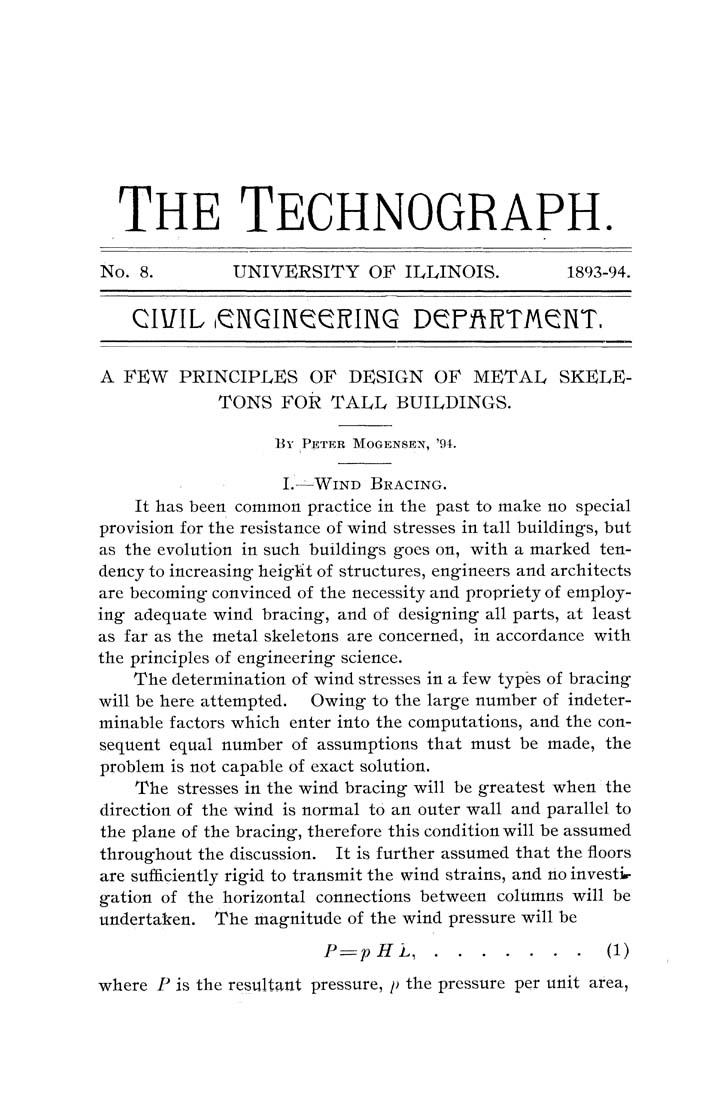The Technograph.
No. 8. UNIVERSITY OF ILLINOIS. 1893-94.
CIl/IL .eNGmeeRING DeFftRTMeNT.
A FEW PRINCIPLES OF DESIGN OF METAL SKELE¬
TONS FOR TALL BUILDINGS.
By Peter Mogensen, '94.
I.—Wind Bracing.
It has been common practice in the past to make no special
provision for the resistance of wind stresses in tall building-s, but
as the evolution in such building-s g-oes on, with a marked ten¬
dency to increasing- heig-ht of structures, eng'ineers and architects
are becoming- convinced of the necessity and propriety of employ¬
ing- adequate wind bracing-, and of desig-ning all parts, at least
as far as the metal skeletons are concerned, in accordance with
the principles of eng-ineering* science.
The determination of wind stresses in a few types of bracing-
will be here attempted. Owing- to the large number of indeter¬
minable factors which enter into the computations, and the con¬
sequent equal number of assumptions that must be made, the
problem is not capable of exact solution.
The stresses in the wind bracing will be greatest when the
direction of the wind is normal to an outer wall and parallel to
the plane of the bracing, therefore this condition will be assumed
throughout the discussion. It is further assumed that the floors
are sufiSciently rigid to transmit the wind strains, and no investir
gation of the horizontal connections between columns will be
undertaken. The magnitude of the wind pressure will be
P^pHL,.......(1)
where P is the resultant pressure, p the pressure per unit area,
|








